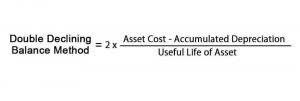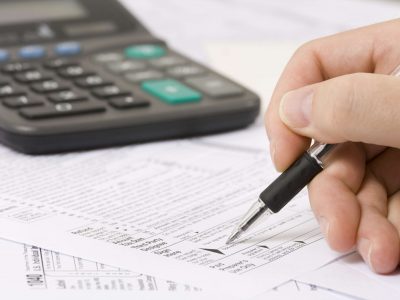
For instance, a business may be able to deduct the full amount of certain administrative expenses, such as office supplies or non-depreciable equipment, in the year they are purchased. Every cost incurred by a business can be classified as either a period cost or a product cost. A product cost is incurred during the manufacture of a product, while a period cost is usually incurred over a period of time, irrespective of any manufacturing activity. A product cost is initially recorded as inventory, which is stated on the balance sheet. Once the inventory is sold or otherwise disposed of, it is charged to the cost of goods sold on the income statement.
SaaS Financial Model Template
Period costs or period expenses are specific type of expenses a company may incur during an accounting period without being able to link it to inventory or cost of goods sold. Understanding these differences is essential for accurate financial reporting and analysis. By properly classifying costs as either Period unearned revenue Costs or Product Costs, businesses can assess their profitability, make informed pricing decisions, and allocate resources effectively. In this guide, we’ll delve deep into the world of Period Costs, exploring their definition, types, significance in financial analysis, methods of allocation, and strategies for effective management. Whether you’re a business owner, manager, or investor, grasping the concept of Period Costs is essential for making informed decisions, optimizing resources, and ultimately achieving financial success.
Recording in Financial Statements
On the other hand, costs of goods sold related to product costs are expensed on the income statement when the inventory is sold. Liabilities are normally things that are settled over time through the transfer of money, goods, or services. Liabilities can either be short-term obligations that are due within one year of a normal accounting period, or they can be Sales Forecasting long-term liabilities and are not due for more than one accounting period. By definition, period costs are costs that are incurred during one accounting period and are not tied to the production of a product or the inventory costs. If liability is short-term and due within one accounting period and is not directly tied to the production of a product or inventory costs, then it could be considered a period cost.
Related AccountingTools Course
For instance, office period costs rent is recorded as an expense in the month it is paid, irrespective of the sales activities of that month. This treatment ensures that the financial statements accurately reflect the company’s operational costs and help in assessing its profitability during a specific accounting period. Examples of product costs are direct materials, direct labor, and allocated factory overhead. Examples of period costs are general and administrative expenses, such as rent, office depreciation, office supplies, and utilities. A few good examples of period costs are advertising and administrative salaries.
📆 Date: Aug 2-3, 2025🕛 Time: 8:30-11:30 AM EST📍 Venue: OnlineInstructor: Dheeraj Vaidya, CFA, FRM
By implementing effective cost allocation methods, businesses can gain insights into their cost structure, enhance decision-making capabilities, and ultimately drive sustainable growth and profitability. By leveraging Period Cost data in decision-making processes, businesses can enhance operational efficiency, mitigate risks, and achieve sustainable growth and profitability in the long term. Depreciation expense is calculated using various methods such as straight-line depreciation, declining balance depreciation, and units of production depreciation. The choice of depreciation method depends on factors such as asset usage patterns, expected future cash flows, and accounting policies.
Additional Resources
- Out of these 500 units manufactured, the company sells only 300 units during the year 2022 and 200 unsold units remain in ending inventory.
- Looking to streamline your business financial modeling process with a prebuilt customizable template?
- If the related products are sold at once, then these costs are charged to the cost of goods sold immediately.
- By implementing effective cost allocation methods, businesses can gain insights into their cost structure, enhance decision-making capabilities, and ultimately drive sustainable growth and profitability.
- Choosing the appropriate method of allocating Period Costs depends on factors such as the nature of the business, the complexity of operations, and the availability of data.
- Every cost incurred by a business can be classified as either a period cost or a product cost.
- When setting prices for products or services, businesses must ensure that all costs, including period costs, are covered to maintain profitability.
Say goodbye to the hassle of building a financial model from scratch and get started right away with one of our premium templates. Explore our marketplace and find the perfect tool to streamline your processes today. Product Costs are essential for calculating the cost of goods sold and determining the gross profit margin of a business.

Comparing Product Costs and Period Costs

CFI is the global institution behind the financial modeling and valuation analyst FMVA® Designation. CFI is on a mission to enable anyone to be a great financial analyst and have a great career path. In order to help you advance your career, CFI has compiled many resources to assist you along the path. My Accounting Course is a world-class educational resource developed by experts to simplify accounting, finance, & investment analysis topics, so students and professionals can learn and propel their careers. Shaun Conrad is a Certified Public Accountant and CPA exam expert with a passion for teaching.
Items That are Not Period Costs

The direct materials, direct labor and manufacturing overhead costs incurred to manufacture these 500 units would be initially recorded as inventory (i.e., an asset). The cost of 300 units would be transferred to cost of goods sold during the year 2022 which would appear on the income statement of 2022. The remaining inventory of 200 units would not be transferred to cost of good sold in 2022 but would be listed as current asset in the company’s year-end balance sheet. These unsold units would continue to be treated as asset until they are sold in a following year and their cost transferred from inventory account to cost of goods sold account. Period costs encompass a variety of expenses that are essential for the day-to-day operations of a business but are not part of the manufacturing process.





Leave a Reply